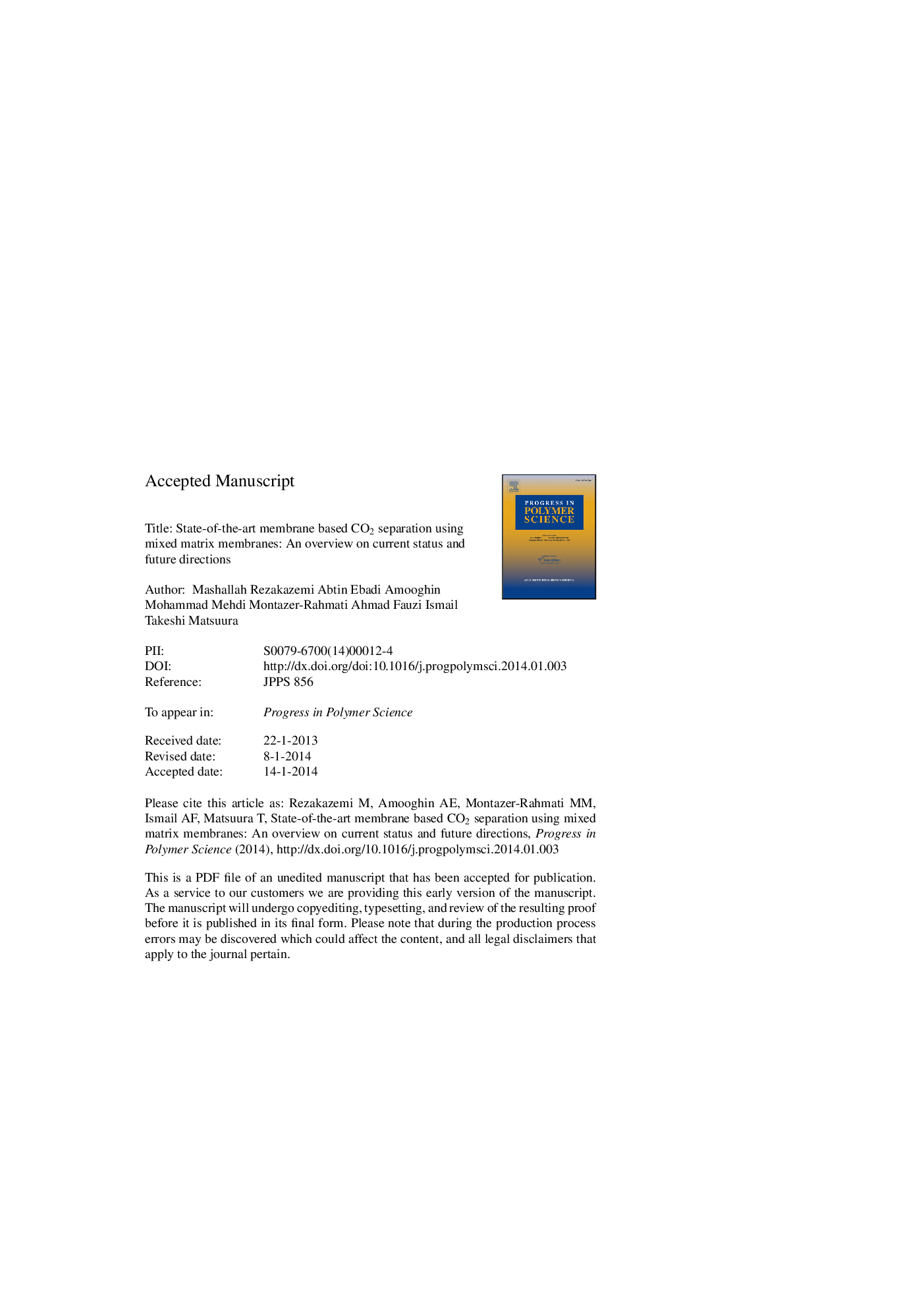| Article ID | Journal | Published Year | Pages | File Type |
|---|---|---|---|---|
| 5208227 | Progress in Polymer Science | 2014 | 112 Pages |
Abstract
The main purpose of research in membrane gas separation is to develop membranes with high permeability and selectivity. Historically, the gas separation performance of polymeric membranes has been constrained to an upper performance limit. Hence, different methods have been investigated to prepare membranes that can exceed this limitation including the incorporation of inorganic materials into polymer matrices. Membranes formed by this method are called mixed matrix membranes (MMMs). The major challenge is to prepare a defect-free polymer/inorganic nanoparticles interfaces with enhanced separation performance and mechanical and thermal stability. For this purpose, various types of nanoparticles have been proposed and examined experimentally. This review is especially devoted to summarize the fundamental concepts that have to be considered to prepare various types of MMMs, including considerations for the design novel MMMs that will eventually surpass the Robeson's trade-off upper bound. In addition, it provides the pros and cons of various factors that affect the MMM preparation especially for CO2 separation processes.
Keywords
PEIPVAZIF-8HMAPDMSPVPABSTGACNTEDXPMPSWNTDEATHFPPCCTAMOFtetramethoxysilanePESZIFtPAPEAPNAPPOETsMSSCAELTLDDECMSPBISBAMCMPMPsFFVPVACPSMAHFMNMPpHEMAPOSSRTIL6FDAPDDAJDF-L1MTMOSPPZMDAMMBSAPOOAPSMesoporous silica sphere6FDA-DAMpolymethylphenylsiloxanesanta barbara amorphouspoly(vinylacetate)Materials modification2,4,6-Triaminopyrimidineacrylonitrile–butadiene–styreneBrunauer–Emmett–TellerPANIpsfsPEEKPolyhedral oligomeric silsesquioxaneAlkyl halideODAEORCellulose acetateCetyltrimethylammonium3,5-diaminobenzoic acidTerephthalic acidcarbon aerogelTemEnhanced oil recoveryTIBATetrahydrofuranTMOSGas separationDabadiethanolamineDiethyl etherZeolite LDamSilicoaluminophosphateBETTAPFTIRFourier transform infrared spectroscopySeparation performanceCarbon molecular sieveMixed matrix membraneMixed matrix membranesHollow fiber membranePhenyltrimethoxysilaneMmmroom-temperature ionic liquidMethyltrimethoxysilaneSEMGrignard reagentAPTESMagnesiumMorphologyHPAScanning electron microscopyTransmission electron microscopySingle-walled Carbon NanotubesCarbon nanotubeHeteropolyacidPara-nitroanilineXRDX-ray diffractionpoly(2-hydroxyethyl methacrylate)Poly(methyl methacrylate)PMMAPolyanilinePES, PolyethersulfonePolyetheraminePolyetherimidePolyethylenePoly(phenylene oxide)polyethylene glycolPolyimidePolybenzimidazolePolysulfonepolyphosphazenePolyvinylalcoholPolycarbonateSulfonated poly(ether ether ketone)PEGPolydimethylsiloxaneMetal organic frameworkActivated carbonsPolypropylene carbonate
Related Topics
Physical Sciences and Engineering
Chemistry
Organic Chemistry
Authors
Mashallah Rezakazemi, Abtin Ebadi Amooghin, Mohammad Mehdi Montazer-Rahmati, Ahmad Fauzi Ismail, Takeshi Matsuura,
